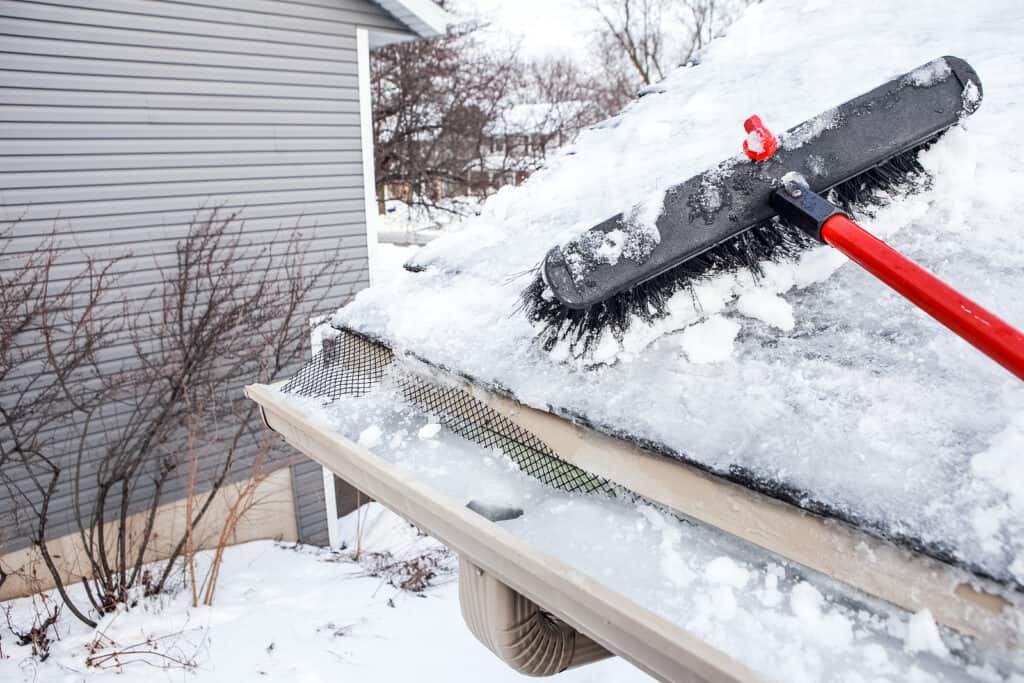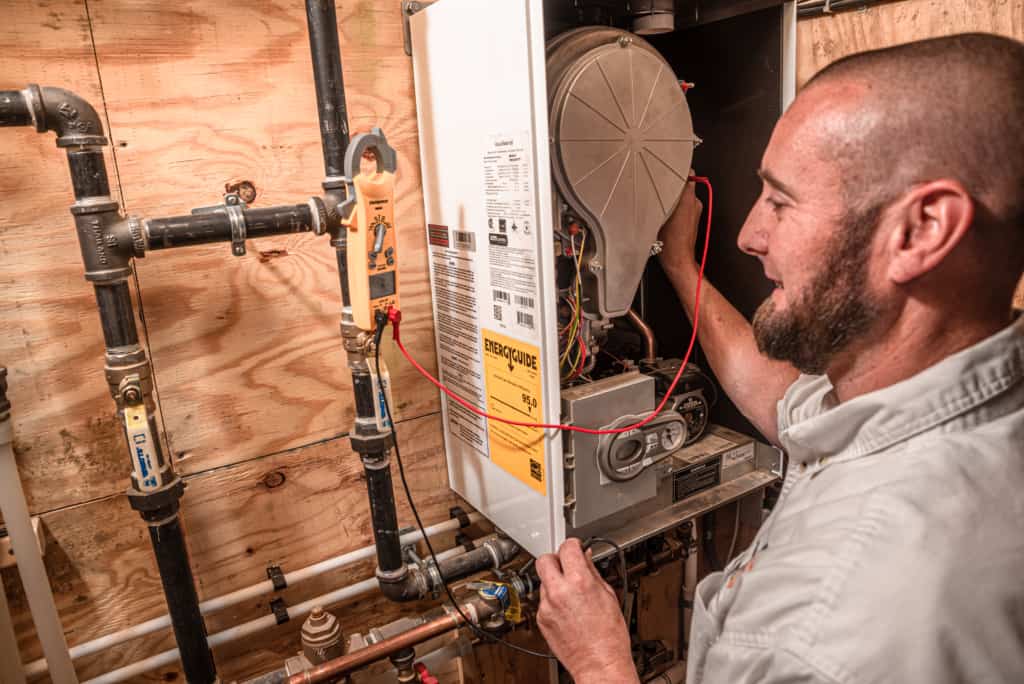For most of us, owning a home is one of the most important financial investments we’ll make in our lives. Homes not only provide shelter and comfort but accumulate value over the years as well.
Committing to home winterization will ensure that your home retains its value and you make the most of your investment. According to the National Oceanic and Atmospheric Administration Pennsylvania ranks 19th out of 50 states for the coldest average temperature in Winter.
The truth is that home breakdowns due to the elements can be much more costly than pet damage, or kids. Winterize your home to minimize the damage of the changing seasons on your home’s structure, comfort systems, and appliances.
This Home Winterization Checklist Isn’t Made to Do In a Day
As any homeowner knows, a lot goes into taking care of a house! We recommend you don’t try to accomplish everything we list below within one weekend. It’s better to try to slowly work through these tasks through the fall months, by dedicating two or three hours a week to these tasks.
It’ll make the entire list much more manageable, and your home will still be ready in time for the winter season.
1. Gutter Cleaning: Removing leaves and debris from your gutters before the winter is essential as it prevents ice dams and water damage. If enough ice were to build up in your gutter over the winter it could begin to sag or even tear away from your home.
If you don’t have the equipment to do this home winterization chore (like a ladder that you can fix to the ground) we recommend finding a trusted local professional service. Out of all the chores on our list, this one can be dangerous, and the money you would save doing it yourself will be small compared to your hospital bills if you fall off a ladder or the roof.

2. Roof Inspection: Do a visual inspection of your roof to locate any potential damage or missing shingles. Getting out the ladder and getting on the roof to do this is one way, but you could also use a pair of binoculars or even a drone with a camera to check out the integrity of your roof before winter.
3. Insulate and Seal: Insulation is one of the best ways to get more out of your current home HVAC system in the Winter or Summer. If you haven’t had your insulation evaluated or you don’t know the current state of your insulation this is one of the best places to start when it comes to home energy savings. Your electric provider will likely provide you with a rebate for adequate insulation.
4. Heating System Maintenance: Schedule a professional inspection and tune-up for your heating system whether it’s a furnace, boiler, or heat pump. While you may be able to do a visual inspection yourself or even potentially clean your system, it’s still best to recruit a professional for this task. Let us take this one off your list by signing up for our maintenance program which allows us to perform service maintenance on your system year-round to ensure optimal functionality.

5. Chimney and Fireplace Maintenance: If you have a natural wood-burning fireplace in your home it’s important to check your chimney each season for soot and other debris buildup. Chimney brushes are fairly easy to use for cleaning, but can be messy.
Make sure you’re wearing clothes you don’t care about and have a dropcloth to protect your living room floor. If you frequently have an issue with animals like squirrels, birds, or even bats getting into your chimney installing a chimney cap should prevent any further unwanted visitors.
6. Weatherstripping: Inspect the weather stripping around your doors and windows. Afterward, replace any weatherstripping that’s lost its integrity. Doors and windows are one of the most common places you lose heat from a home.
7. Caulking Gaps: Sealing any gaps around pipes, wires, or other openings in your walls and floors can help prevent wind drafts and pests. This is especially important in the winter when rodents and other critters are looking for warm shelters during the cold winter months.
8. Exterior Faucets: Drain and disconnect outdoor hoses and consider adding freeze-proof faucet covers. Hoses that are left out in winter can become damaged from the water inside expanding while it freezes.
9. Insulate Pipes: Exposed water pipes should be insulation-wrapped to prevent any freezing or worse, bursting. This process is fairly simple and can be accomplished with common materials from your local hardware store.
10. Check Smoke & Carbon Monoxide Detectors: Test your smoke alarms and carbon monoxide detectors and replace any batteries if needed. It’s important to always make sure these are in working order. Check with your home insurance company to see if they offer any rebates for new smoke or carbon monoxide detectors.
11. Install Storm Windows and Doors: If you have storm windows and doors that are not currently installed, these outer doors and windows add another layer of insulation to your home, and help to keep more heat trapped inside in the winter and cool air in the summer.
12. Trim Trees and Branches: Trim tree branches that could potentially fall on your home due to heavy snow or ice. This is also a great time to trim back any bushes or shrubs that may be encroaching on your walkways. You don’t want to have to deal with both a potentially slippery and crowded walkway in the winter.
This will also help your outdoor shrubs to survive through the winter. Being smaller in size allows them to conserve more nutrients as the daylight becomes less and plants become dormant.
13. Prepare an Emergency Kit: It doesn’t have to be fancy or branded. A winter emergency kit is as simple as one or two flashlights (with fresh batteries!), space blankets, and a first aid kit. It’d also be good to have some non-perishable food aside for a pinch.
14. Snow Removal Equipment: Ensure your snow shovels, snow blowers, and any ice melt or sand you plan to use is ready. If your shovel is broken, or wearing out, investing in a new one will make shoveling easier.
15. Generator Maintenance: If you have a generator ensure it’s in working condition and you have sufficient fuel. We recommend running the generator for twenty to thirty minutes to ensure that it’s properly functioning. If your generator is on its last winter, we offer financing for new Kohler home generators.
16. Clean and Store Outdoor Furniture: With the popularity of hardscaping and other outdoor home features it’s important to remember to clean and store your outdoor furniture if you want it to last and remain in good shape. If you don’t have space to store your outdoor furniture, you should invest in furniture covers to keep your furniture protected throughout the winter.
17. Reverse Your Ceiling Fans: Ceiling fans aren’t just for the summer months. Reversing your ceiling fans to spin clockwise in the winter pushes the warm air at the ceiling back toward the floor. You should run your ceiling fans at their lowest settings before
18. Car Maintenance: Checking your car’s anti-freeze, tire treads, and battery are tasks you can do to ensure you’re ready for winter driving. If you have snow tires for your vehicle we do recommend having them installed by an auto mechanic professional.
19. Emergency Contacts: Have a list of emergency contacts handy and then photograph the list to save it in your phone. This list should include your utility company, plumbers, and HVAC technicians. We can help you with this one, save our number 717-299-3914. We have technicians available 24/7 to help you in the event of an emergency.
20. Driveway and Walkway Maintenance: Inspect your driveway and walkways for cracks. If small enough you may be able to repair these yourself. If they’re larger you may want to consider a professional repair or even replacement. As water in the winter freezes within these cracks it can expand them and make them worse.
21. Pet Supplies: Make sure that you have an adequate supply of pet food and any medications your pet may need.
22. Winterize Lawn Equipment: Drain all gas-powered lawn equipment of fuel before storing for the winter. Leaving fuel to sit in your engine, especially ethanol will drastically reduce the lifespan of your lawn equipment.
Often homeowners will attempt to run their equipment until it’s out of gas. As we head into winter only fill it in small increments to avoid having to drain and waste fuel.
23. Test Snow Removal Equipment: Before the first snowfall, ensure your snow blower starts and it’s fully operational.
24. Emergency Heating: It can pay off to have a backup heating source during an emergency. A small space heater and fuel for it can really help during an HVAC system failure.
Failing to Prepare for Home Winterization is Preparing to Fail.
Keep in mind, these chores should be done before the temperature drops and winter sets in. You don’t want to be on a ladder cleaning your gutters when it’s icy and daylight is at a premium. Taking the time to do these chores now in late summer will have your home ready for the brutal Pennsylvania winter.
If you’re having concerns about your heating system needing to be maintained, upgraded, or even replaced, don’t hesitate to contact us with your questions.




